
Internationale Poetry-Biennale - Filmfestival - Salon - Netzwerk
Rückschau Filme bei female presence -
Dokumentar- und Spielfilm Festival März 2017
©Kurt Mayer Film Wien
WO ICH WOHNE - EIN FILM FÜR ILSE AICHINGER
A 2014, 81 min, Regie: Christine Nagel
Ilse Aichinger: "Vielleicht erkennen wir einander nur richtig in einem Licht von Abschied." In dieses Licht taucht der Film in seinen besten Momenten eine große Autorin des 20. Jahrhunderts. Der Standard
Das Stille, Beobachtende und Absurde macht das Geheimnis von Ilse Aichingers Poesie aus, das die Filmbilder von "Wo ich wohne" bewahren. Auch die von ihr gedrehten, nie gezeigten Super-8-Filme halten das Erstaunen darüber wach, dass wir uns vorfinden, und wie wir uns vorfinden. Die Sicht der Entfremdung ermögliche es, wach zu bleiben gegenüber "allen Versuchen der Natur und der Gesellschaften, uns einzuschläfern".
Der Film verführt auf sinnliche Weise, sich auf das Werk von Ilse Aichinger einzulassen, welches in seiner Einzigartigkeit für das 20. Jahrhundert steht und zugleich in seiner existentiellen Dimension zeitlos ist.
In dem Film WO ICH WOHNE ist die Schriftstellerin Ilse Aichinger Protagonistin und Zuschauerin zugleich: Ihre Erzählung "Wo ich wohne" wird zum Kristallisationspunkt von Werk und Person Ilse Aichingers. In der Geschichte des Filmes sinkt die Wohnung einer Frau unverändert ein Stockwerk tiefer. Schließlich landet sie im Keller. Die Umgebung der Frau scheint nicht zu bemerken, was sich ereignet.
In den dramatischen Verlauf der Geschichte hineinverwoben sind Bilder von den Orten, die Ilse Aichingers Schreiben bestimmten: ein Haus, in dem sie einmal wohnte, und in dem sich die absurd-surreale Erzählung "Wo ich wohne" für sie ereignete; die Stadt Wien, deren Gassen und Straßen Ilse Aichinger täglich durchmaß: die Orte, die an den Verlust der Familie erinnern, die 1943 in ein Todeslager deportiert wurden. Des weiteren englische Stadt-Landschaften, die sie als Sehnsuchts-Orte ihrem Werk eingeschrieben haben, da die Rettung nach England nur der Zwillingsschwester Helga mit einem Kindertransport gelang. Biografische Erinnerungen treten in Beziehung zur Fiktion und zu Ilse Aichingers – zum ersten Mal veröffentlichten - Super-8-Filmen, die sie in den 60er Jahren selbst gedreht hat.
Christine Nagel lernte Ilse Aichinger bei einer gemeinsamen Hörspiel-Arbeit im Jahr 2001 kennen - ein halbes Jahr vor ihrem 80.Geburtstag, als die Schriftstellerin noch täglich durch Wien zog, jede Gasse kennend, und am Abend in bis zu drei Kinos ihre Zeit verbrachte - der Stadtraum Wien war ihr Zuhause geworden. Der erste Besuch bei Ilse Aichinger dauerte länger als gedacht, und führte dazu, daß die Filmemacherin über viele Jahre hinweg die Autorin besuchte – bis heute. Sie teilten Zeit und Raum im Kinosaal, der für Ilse Aichinger die ersehnte Möglichkeit war "zu verschwinden". Sie zogen von Kaffeehaus zu Kaffeehaus, an Orten und Plätzen vorbei, die Ilse Aichinger prägten.
Der Film zerstört Chronologie, da ist Finsternis zwischen den Bildern. Auch Erinnerung verfährt nicht chronologisch:
Ich sehe einen Film, absolute Gegenwart – da tauchen Sätze auf, die vor siebzig Jahren in der Wohnung unserer Großmutter in der Hohlweggasse fielen.
Ilse Aichinger, 2001 in der Tageszeitung Der Standard)
⇒ Wo ich wohne - Ein Film für Ilse Aichinger - Offizieller Trailer
⇒ Ein Film für Ilse Aichinger - Website
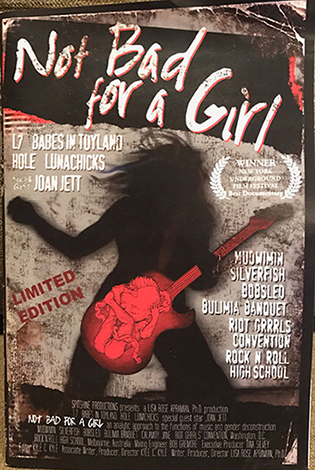
©Lisa Rosa Apramian
NOT BAD FOR A GIRL
USA 1995, 90 min, Regie: Lisa Rose Apramian,
Produktion:
Tina Silvey, Koproduktion: Courtney Love and Kurt Cobain
Münchner Erstaufführung, in Deutschland zum ersten mal seit 20 Jahren zu sehen.
The tag line for the documentary Not for a Girl - "an analytic approach to the functions of music and gender deconstruction" - flies like a red flag: you can't help but roll your eyes and shudder at the mirthless dissertation that's suggested. Luckily, writer-director Lisa Rose Apramian, Ph.D., keeps academic babble to a minimun. Filled with rich, often moving insights from the women featured it is a behind-the-scenes, no-bullshit examination of both music created by women and the contexts in which it's created.
What's amazing is the assured handling of both areas. The relief at being taken seriously as musicians is obvious on the faces of the women interviewed so the fact that the isolation, frustration and anger that fuels so much of their work aren't reduced to stereotype or marketing hook ... Yes, it's obvious: it's also powerful. LA WEEKLY, October 1996
Not Bad for a Girl is a feature length documentary on women musicians from the indie rock music genre from 1989-1995. It celebrates madness, creativity, and gender performance, play and deconstruction. The bands featured in the film were all the members of Hole, L7, Lunachicks, Babes in Toyland, Joan Jett, Calamity Jane, Bulimia Banquet, The Mudwimin, Silverfish, 7 Year Bitch, Bratmobile, Bikini Kill.
The documentary features in-depth interviews with every band member, including Donita Sparks and Jennifer Finch from L7, Courtney Love from Hole, Kat Bjelland from Babes in Toyland, and Becky Wreck from the Lunachicks along with clips from live performances from 1989-1994. This wave of women in music set the tone for future generations in the US as well as globally.
Not Bad for a Girl came just after Dr Lisa’s ground breaking qualitative dissertation, on rock music and adolescence. It explores themes such as the musicians’ relationship to their music, (playing styles, kinesis, sounds, lyrics, stage personae), the negotiation of gender identity through rock, subversion of stereotypes and gendered expectations through stage play performances and stylization’s of the body, and the processes of healing and reclaiming through musical expressions.
Best Documentary, New York Underground Film Festival 1996
Nominated: Best Director, 19th Atlanta Film and Video Festival 1995
⇒ Not Bad For A Girl - Trailer
⇒ Not Bad For A Girl Website
BEAT GIRL (a.k.a. WILD FOR KICKS)
USA, 1960, 85 min, Regie: Edmond T. Gréville
Starring Gillian Hills ("Blow Up", "Clockwork Orange"),
David Farrar,
Noëlle Adam,
Christopher Lee,
Adam Faith, Oliver Reed.
Music by John Barry (his first film score)
The British beatnik scene! Sleazy and irresistible!
A moody, sullen teenage beatnik girl digs her heels in when her father remarries and she discovers her new "mother" has a sordid past! Beatniks, chicken, drag racing and striptease. The is a 50s teen movie that has everything going for it.
Beat Girl is set in that mythic milieu in pop culture history – Soho in the late 50s – the moment when England discovered ‘cool’, when wild young merchant seamen such as Tommy Steele and Cliff Richard went looking for kicks during shore time and accidentally imported an American music called rock’n’roll. In coffee bars, across the street from strip joints, the nation’s first ‘teenagers’, fuelled by double shots of espresso, went wild for this new music. Somewhere between child and adult, this new being began to create its own identity and its own language. The film depicts a world of crazy beatnik jazz and early rock’n’roll.
The jazz music is provided by the John Barry Seven (just a year before Bond theme mega-stardom) and the rock’n’roll by Barry’s protégé Adam Faith – who gets to perform two songs. The John Barry theme tune is quite something, maybe even better than his classic Bond theme. Thus it is that Beat Girl became the first British film to have a soundtrack LP release.
‘THIS COULD BE YOUR DAUGHTER’, the poster shrieks, and Beat Girl is undeniably an exploitation film, with the familiar mix of titillation (a lengthy strip scene was cut from the original UK release but is usually reinstated nowadays) and delinquency with a timely lesson in morality thrown in at the end. Unsurprisingly, it is a bit corny and a little clichéd but in all the right places. Gillian Hills is excellent as the wild beat girl ignored by her architect father (obsessed with the creation of his sound-proofed utopia ‘City 2000′) and angry at his new 24-year-old French wife. She spends her time screaming hysterically in her bedroom or sneaking off from St Martin’s College to hang out and drink coffee with her friends and go dancing in cellars and caves ’til the early hours with a young Oliver Reed (now that is wild!). The film is always willing to show the seedier side of life. As in Jane Mansfield’s Soho-set movie Too Hot To Handle (1960), much of the action concerns the strip clubs and their managers (Christopher Lee in both cases) and of course the strippers.
Beat Girl remains an entertaining film and a great picture of that brief moment of British ‘cool’ before the entertainment industry stepped in and turned Cliff, Tommy et al into family entertainers. But while Cliff and Tommy got cleaned up, Soho’s reputation as London’s centre of sex, caffeine and rock’n’roll was made. In the 60s the R’n’B clubs gave the likes of Georgie Fame and The Yardbirds their start and even today coffee shops (mostly Starbucks, granted) exist alongside strip clubs and sex shops. And jazz can still be heard at the Pizza Express.
⇒ Clip aus BEAT GIRL: BEATNIK POEM - Maila Nurmi
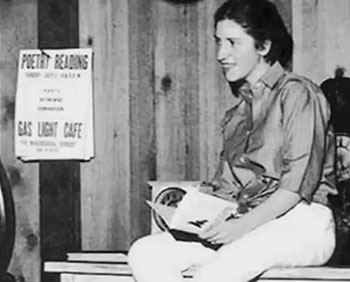
©Women Make Movies New York Sonntag, 26. März - 16 Uhr
THE POETRY DEAL: A FILM WITH DIANE DI PRIMA
USA, 2011, 27 min, Regie: Melanie La Rosa
This film looks back on more than 50 years of poetry, activism, and cultural change, providing a unique women's perspective of the Beat movement. An impressionistic documentary about legendary poet Diane di Prima. The most well known female writer of the Beat Era, di Prima is fierce, funny, and philosophical, still actively writing in her late 70s in San Francisco. She is a pioneer who broke boundaries of class and gender to publish her writing.
It tells a story of rebellion and artistic integrity through the life of poet, prose writer, playwright, teacher and revolutionary activist Diane di Prima. Di Prima started writing at the age of seven and committed herself to a life of poetry at age fourteen. She ultimately became known as an important writer of the Beat movement, and has continued writing, publishing and teaching. She was made Poet Laureate of San Francisco in 2009.
Now in her 70s, in rare intimate interviews, Diane talks about her life and work in THE POETRY DEAL, a unique, beautiful portrait using rare archival material, visual poetry shot in Super8 and 16mm, and stories told by friends and colleagues to put di Prima’s powerful writing on screen.
In the 1950s, well-known Beat writers such as Allen Ginsburg and William Burroughs upended the literary world, tTheir words started a literary tide that rippled out into broader social movements. Regarded as a handful of macho male renegades, the Beats also had groundbreaking women. But they were shockingly short on historical recognition.
When I talk about the film, most people say they did not know there were women among the Beat writers. Neither did I, until I found di Prima’s 2001 memoir, "Recollections of My Life as a Woman". Floored, I wondered why I had never heard her story before. I started to look for a way to meet her ⇒ I Broke Filmmaking Rules to Capture Anarchist Poet: Melanie La Rosa über ihren Film.
Diane di Prima committed herself to life as a poet in high school and has produced more than 40 books of poetry and prose. In 2009, she was named Poet Laureate of San Francisco, where she lives.
⇒ THE POETRY DEAL - Women Make Movies - Trailer
SISTER ROSETTA THARPE. THE GODMOTHER OF ROCK AND ROLL
USA 2013, 52 min, Regie: Mick Csaky
Southern-born, Chicago-raised and New York-made.
Despite not being a household name today, Sister Rosetta Tharpe is one of the most influential artists of the 20th century. Her flamboyance, skill, and showmanship on the newly electrified guitar played a vital role in the conception of Rock & Roll as a genre of music. Featuring archival performances and using new interviews with fellow musicians, producers, friends, and colleagues, this film tells the story of a talented and determined woman that introduces spiritual passion of her gospel music background into Rock & Roll.
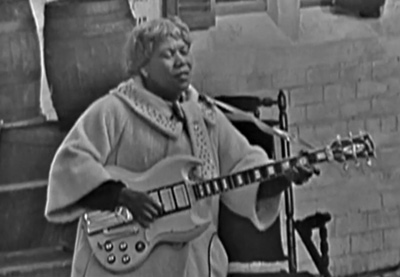
Southern-born, Chicago-raised and New York-made, Sister Rosetta rose from poverty to become one of the world’s most popular gospel singers and the first to cross over successfully into mainstream popular music. She introduced the spiritual passion of gospel into the secular world of rock ’n’ roll, inspiring some of its greatest stars, including Chuck Berry, Elvis Presley, Jerry Lee Lewis, and Little Richard.
A natural-born performer and a rebel, "She could play the guitar like nobody else … nobody!" says Lottie Henry, a member of Tharpe’s back-up vocal group The Rosettes.
"Elvis loved Rosetta Tharpe," attests Gordon Stoker of The Jordanaires, who performed with both Sister Rosetta and Elvis. "Not only did he dig her guitar playing but he dug her singing too."
The child of poor cotton pickers, Sister Rosetta was born in Cotton Plant, Arkansas. At the age of six, she was taken by her evangelist mother Katie Bell to Chicago to join the Church of God in Christ, where she developed her distinctive performing style. In 1938, at the age of 23, she briefly left the church for show business, causing huge controversy when she performed songs laden with sexual innuendo in New York City venues such as the famed Cotton Club and Café Society, where she immediately became a favorite of both Cab Calloway and Duke Ellington. However, Sister Rosetta soon returned to her gospel roots and performed in packed churches and theaters throughout America and Europe, becoming one of America’s most distinctive recording stars on radio and television during the 1940s, 1950s and 1960s.
"Sister Rosetta Tharpe was anything but ordinary and plain; she was a big, good-looking woman and divine, not to mention sublime and splendid. She was a powerful force of nature –a guitar-playing, singing evangelist." (Bob Dylan)
⇒ THE GODMOTHER OF ROCK AND ROLL - Trailer
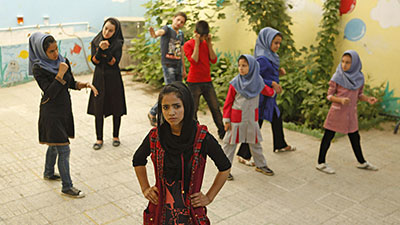
©Realfiction Köln
SONITA
D/ Iran/ CH, 2015, 91 min, Regie: Rokhsareh Ghaem Maghami
Als kleines Mädchen ist Sonita mit ihrer Familie vor den Taliban von Afghanistan in den Iran geflohen. Hier lebt sie seither ohne Rechte, offizielle Schulbildung oder Papiere und verdient mit Kinderarbeit Geld, um die Familie zu unterstützen.
Aber Sonita hat Talent und möchte Sängerin werden. Obwohl es in Iran verboten ist, als Solo Künstlerin zu singen, sucht sie in Teheran nach einem Studio, um ihren Song über Kinderarbeit aufzunehmen. Dabei wird die Dokumentarfilmerin Rokhsareh Ghaem Maghami auf Sonita aufmerksam und folgt ihr mit der Kamera, um ihre Lebensumstände und ihren Kampf um Selbstverwirklichung zu dokumentieren.
Sie folgt ihr in ihr spärliches Zuhause im Teheraner Ghetto, wo Sonita voller Zuversicht und positiver Energie ihr Ziel verfolgt: Eine berühmte Rapperin zu werden und ein Studio zu finden, dass trotz Verbot ihren Song aufzeichnet. Eine Sozialarbeiterin hilft ihr bei der Überwindung ihrer Fluchttraumata und Sonita singt auch den anderen Mädchen in der Einrichtung aus der Seele.
Doch nach und nach werden ihre Freundinnen als Bräute zurück nach Afghanistan verkauft. Und als Sonitas Bruder Geld für die eigene Hochzeit braucht, steht auch Sonita die Zwangsehe bevor. Die Familie plant, sie für 9000 $ an einen fremden Ehemann nach Afghanistan zu verkaufen und die Zeit drängt. Die Regisseurin wird so in ein Dilemma verwickelt: Darf sie in das Schicksal ihrer Protagonistin eingreifen und ihr helfen, die drohende Hochzeit zu verhindern? Schließlich bezahlt sie nach langem Ringen 2000 €, um Sonita vor der Ehe zu retten und von der Familie ein bisschen Zeit zu erkaufen.
Sie schaffte es, trotz Verbot einen Clip ihres eigenen Songs in einem Studio zu produzieren und auf youtube zu stellen. Dort bekommen der Song und Sonita eine weltweite Aufmerksamkeit, die das Leben von Sonita entscheidend verändern wird.
Ein furioser Aufruf gegen die Zwangsheirat und für die Selbstbestimmung muslimischer Frauen.
Großer Preis der Jury, Zuschauer Preis Sundance Film Festival 2016
Zuschauer Preis IDFA, Amsterdam 2016
Ein auf vielen Ebenen fesselnder und beunruhigender Dokumentarfilm, der eine Debatte unter Filmemachern auslösen sollte und die Sympathien vieler Zuschauer für sich gewinnen wird. Bemerkenswert ist vor allem die Komplexität und Geisteshaltung der beteiligten Frauen (...) ihre vereinte Stärke und Menschlichkeit sind tief berührend. Screen Daily
Regisseurin Rokhsareh Ghaem Maghami hat Regie und Animation an der Kunst Akademie in Teheran studiert. Ihre Forschung im Bereich der Animation hat sie in dem Buch "Animated Documentary, a New Way to Express" veröffentlicht. Sie hat sechs kurze Dokumentarfilme fertiggestellt und mehr als 20 internationale Preise gewonnen.
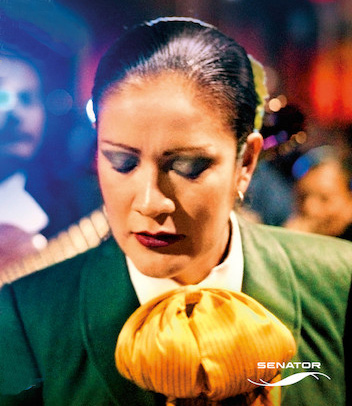
©Senatorfilm München
DIESES SCHÖNE SCHEISSLEBEN
D 2014, 90 min, Regie: Doris Dörrie
Kraftvoll, laut und wunderbar: In ihrer Doku porträtiert Doris Dörrie Frauen, die in die Männerdomäne der Mariachi-Musik vorgestoßen sind. Ihre Unbeirrbarkeit fügt sich grandios ein in die mexikanische Kultur der Extreme. Süddeutsche Zeitung
Das Bild des musizierenden, Sombrero und Cowboystiefel tragenden Mariachi in engen Hosen gehört zu den populärsten Assoziationen mit der mexikanischen Kultur. Mariachi ist nicht nur Musik, sondern ein Lebensstil, der die Welt aus einer Macho-Perspektive zeigt. Das Business ist hart, und Frauen haben in dieser von Männern dominierten Welt nichts verloren. Trotzdem entscheiden sich einige Frauen für ein Leben als Mariachi. Eine von ihnen ist María del Carmen.
Vor dem Hintergrund des "Día de los Muertos", dem farbenfrohen und oft bizarren Totenfest, begleitet Regisseurin Doris Dörrie sie und ihre Musikerkolleginnen der "Estrellas de Jalisco und der "Las Pioneras" bei ihren Auftritten auf den Straßen von Mexiko-Stadt. Wenn die Mariachi-Frauen kräftig und laut über Tod, Liebe und Armut singen, erscheinen die schweren Dinge des Alltags leichter. Genau wie ihre Lieder, ist "Dieses schöne Scheißleben" eine liebevolle Momentaufnahme vom Leben, vom Tod und den Dingen dazwischen.
Eine musikalische Liebeserklärung an Mexico, die Stärke der Frauen und die Kraft der Musik
⇒ DIESES SCHÖNE SCHEISSLEBEN - Trailer
⇒ Süddeutsche Zeitung